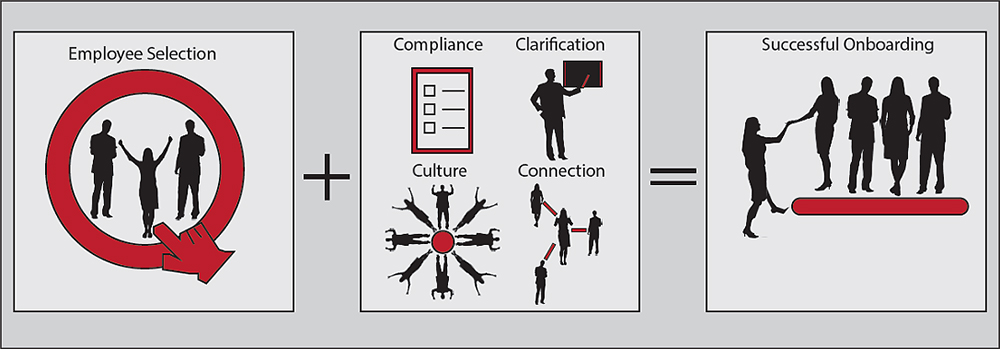What is Onboarding?
Technically, onboarding is the process where new employees gain the knowledge and skills over the course of several months, to successfully function as members of an organization. The most effective onboarding, though, fosters meaningful connections within the company.
Why is Onboarding Important?
CareerBuilder published an article called The 10 Commandments of Employee Onboarding, which describes why onboarding is so important to get right. When new employees are properly prepared, it reduces the cost of learning on the job, allowing them to perform their job functions earlier and at a higher level. Employees who receive proper onboarding require less training afterward, saving time that other employees would otherwise have to spend training them. When employees receive proper onboarding, their level of stress is reduced, because they understand how to perform their roles and feel more comfortable within the organization. Onboarding can also reduce employee turnover by increasing job satisfaction and by making new employees feel valued, committed and included as part of the team. According to the Bureau of Labor Statistics, it costs over 25 percent of an employee’s annual salary to replace them. Successful onboarding can help prevent this costly turnover.
How to Onboard New Employees Successfully:
According to Dr. Talya Bauer from the SHRM Foundation, successful onboarding involves proactively covering The Four C’s. This stands for compliance, clarification, culture, and connection.
- Compliance is the lowest level and involves learning the basic rules and policies of the organization, as well as filling out all necessary paperwork.
- Clarification ensures that the new employees understand their roles and responsibilities. It can help to describe upcoming projects in which they will be participating, and how they can contribute.
- Culture explains the norms for the organization. This can be accomplished by giving them a tour of the facilities, describing how things work, and explaining how they fit within and impact the larger organization.
- Connection is the highest level, wherein a new employee develops relationships with the other members of the organization and begins to feel like part of the team. Introduce them to as many of their coworkers as possible! Encourage team members to explain what they do and to include the new hire in formal, as well as informal activities, such as going to lunch together. It helps to assign a mentor or buddy who can be readily available to answer any questions, and who can bridge the gap between the new employee and their coworkers.
Developing connections at a new job might be the trickiest of the 4 Cs, but arguably the most important. Let’s face it—building a successful working relationship with a new supervisor can be hard. Small talk, for some people, is even harder! Be mindful of the social landscape, and facilitate, if need be.
Whether or not onboarding is successful essentially boils down to two main areas. First, it is imperative to select the right employee, who can perform the job functions, who fits the company culture, and who is motivated to become integrated within the organization. Second, it depends on The Four C’s, where the new employee understands their role, has confidence in their ability to do their role, understands the company’s culture, and becomes socially integrated into the organization.
—
Alex Weisberg serves as an Instructional Designer on the Professional Learning and Instructional Design team for NC State Industry Expansion Solutions (IES). His focus is on working with subject matter experts to design, develop, and assess training content to ensure it is engaging and effective. Prior to joining IES, Alex worked at PTC as an Education Editor Specialist. He holds a bachelor’s degree in English from the University of Michigan and a master’s degree in Instructional Systems Technology from Indiana University. His experience in adult education spans over 6 years working with subject matter experts to improve and develop training materials.



